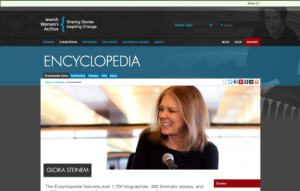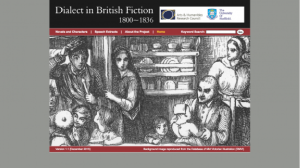Theme: Women's History Month
Back to Top
|
 |
|
Clara Barton Papers
|
Social studies |
|
Clara Barton, who lived from 1821-1912, is well-known as the pioneering nurse and humanitarian who founded the American Red Cross, but she was also a teacher, philanthropist, women's suffrage advocate, and one of the first female federal employees. Those interested in learning more about this remarkable woman and her legacy would do well to visit this extensive collection of Barton's papers, made available by the Library of Congress. Here, readers can peruse the collection's approximately 62,000 items, which include Barton's personal papers (diaries and journals), official papers (financial and organizational records), and assorted other media (including scrapbooks of contemporary newspaper articles). The majority of this collection dates from 1861 to 1912, though the full collection spans the years 1805-1958. It is organized into eleven series, and the Library of Congress has helpfully provided a finding aid in both PDF and HTML format containing links to the collection's digital content. In addition to this trove of primary resources, educators may also want to check out the related teaching resources, as well as the expert resources, linked in the left sidebar. [JDC] |
|





|
|
 |
|
 |
|
Jewish Women's Archive: Encyclopedia
|
Social studies |
|
The Jewish Women's Archive (JWA) provides free online access to this extensive encyclopedia of Jewish women's history. This encyclopedia is based on a 2006 CD-ROM version of Jewish Women: A Comprehensive Historical Encyclopedia and has since been updated and expanded. Here, readers will find "over 1,700 biographies, 300 thematic essays, and 1,400 photographs and illustrations on a wide range of Jewish women through the centuries." Organized alphabetically, visitors can filter the entries by broad topics such as art, science, and sports, then again by sub-topics such as painting, engineering, and athletes. It covers well-known Jewish figures such as US Supreme Court Justice Ruth Bader Ginsburg, as well as some who may be surprising, such as Josephine Sarah Marcus Earp, wife of gunfighter Wyatt Earp. Each entry includes a bibliography of sources, and the encyclopedia also includes a short glossary of terms that may be helpful for visitors unfamiliar with Jewish culture. This valuable resource will be of interest to students and educators, as well as the generally curious. Educators may also want to check out JWA's many lesson plans and teaching tools. Based in Massachusetts, JWA is "a national organization dedicated to collecting and promoting the extraordinary stories of Jewish women." [JDC] |
|





|
|
 |
|
Atria Institute on Gender Equality and Women's History: Collection Highlights
|
Social studies |
|
Located in Amsterdam, the Atria Institute on Gender Equality and Women's History describes itself as "a national knowledge institute [that] collects, manages and shares the heritage of women and, on the basis of research and facts, promotes equal treatment of women and men in all diversity." Here, readers can explore highlights from Atria's extensive collections, many of which stem from the International Archives for the Women's Movement founded in 1935 at the end of first-wave feminism. These highlights showcase 80 objects from Atria's collections and include multiple items from the Aletta Jacobs collection, which features the Netherlands' "most prominent feminist" and has been recognized by UNESCO with inclusion in its Memory of the World Register. In addition to these and other first-wave artifacts, such as books and pamphlets from the Dutch Association for Women's Suffrage, these highlights also include objects from feminism's second wave, such as postage stamps from Rwanda issued for International Women's Year in 1975. Each item highlighted includes one or more images and a brief description in English. While this section of Atria's website does not include options for more detailed searching specifically within the highlights, they are enjoyable to browse, and Atria's entire website is searchable for those interested to learn more. [JDC] |
|





|
|
 |
|












